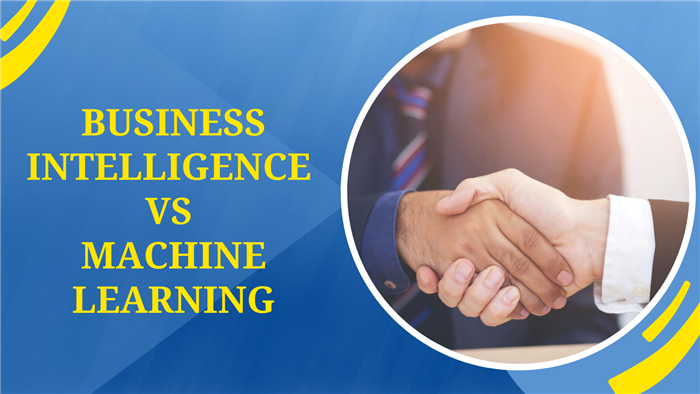Unable to find what you're searching for?
We're here to help you find it
Business Intelligence (BI) and Machine Learning (ML) are two buzzwords that have gained a lot of traction in recent years. Both of these technologies are used to help businesses make more informed decisions, but they are quite different in nature. In this post, we will take a closer look at what sets BI and ML apart, and which one might be the best fit for your business.
Business Intelligence is a technology that enables businesses to analyse and interpret data in order to make more informed decisions. BI involves the use of software tools and techniques to collect, integrate, analyse, and present data in a way that is meaningful and actionable.
BI is typically used to answer questions such as:
What are our sales figures for the last quarter?
Which products are selling the best?
What are the demographics of our customers?
Business Intelligence tools can also be used to create visualisations, such as charts and graphs, which help to communicate data in a way that is easy to understand.
BI is a mature technology that has been around for many years. As such, there are many well-established tools and methodologies available for implementing BI solutions. Some of the most popular BI tools include:
Tableau
QlikView
Power BI
MicroStrategy
SAP BusinessObjects
Machine Learning is a subfield of artificial intelligence that involves the development of algorithms and models that enable computers to learn from data. ML algorithms are designed to automatically identify patterns in data and use these patterns to make predictions or decisions.
ML is typically used to answer questions such as:
Which customers are most likely to churn?
What products should we recommend to a particular customer?
What is the optimal price for a product?
ML algorithms are trained using large amounts of data. The more data that is available, the more accurate the predictions or decisions made by the algorithm will be.
ML is a relatively new technology, but it has already gained a lot of traction in many industries. Some of the most popular ML tools include:
TensorFlow
PyTorch
Scikit-learn
Keras
Microsoft Azure Machine Learning
Now that we have a basic understanding of what BI and ML are, let's take a closer look at what sets them apart.
The primary purpose of BI is to enable businesses to analyse and interpret data in order to make more informed decisions. BI is focused on answering questions such as "What happened?" and "Why did it happen?"
The primary purpose of ML, on the other hand, is to develop algorithms and models that can make predictions or decisions based on data. ML is focused on answering questions such as "What is likely to happen in the future?" and "What should we do to achieve a specific outcome?"
BI is typically used to analyse structured data, such as sales figures, customer demographics, and website traffic. BI tools are designed to work with data that is well-organised and easily accessible.
ML, on the other hand, is typically used to analyse unstructured data, such as text, images, and video. ML algorithms require large amounts of data in order to learn and make accurate predictions. This data must be properly labelled and prepared before it can be used to train an ML algorithm.
The outputs of BI are typically visualisations, such as charts and graphs, that help to communicate data in a way that is easy to understand. BI outputs are designed to answer specific questions and provide insights that can be used to inform decision-making.
The outputs of ML are typically predictions or decisions that are made automatically based on the patterns and relationships identified in the data. ML outputs are often used to optimise business processes, improve customer experiences, or identify new opportunities.
Implementing a BI solution typically involves setting up a data warehouse, integrating data from various sources, and configuring the BI tool to generate reports and visualisations. BI implementations can be complex and time-consuming, but once they are set up, they are relatively easy to maintain.
Implementing an ML solution, on the other hand, involves a more iterative and experimental process. ML algorithms must be trained using large amounts of data, and the results must be validated and refined over time. Implementing an ML solution can be more challenging than implementing a BI solution, but the potential benefits can be much greater.
Choosing between BI and ML depends on the specific needs and goals of your business. Here are some factors to consider:
If your business primarily deals with structured data, such as sales figures or customer demographics, then BI may be the best choice. If your business deals with unstructured data, such as text, images, or video, then ML may be the better choice.
If your business goal is to gain insights into past performance and make more informed decisions based on historical data, then BI may be the best choice. If your business goal is to optimise business processes, improve customer experiences, or identify new opportunities, then ML may be the better choice.
Implementing a BI solution requires data warehousing expertise, as well as knowledge of the specific BI tool being used. Implementing an ML solution requires data science expertise, as well as knowledge of the specific ML tool being used. Consider the resources available within your organisation before deciding which technology to implement.
BI can provide valuable insights into past performance and help businesses make more informed decisions based on historical data. ML, on the other hand, can help businesses optimise processes, improve customer experiences, and identify new opportunities. Consider the potential benefits of each technology before making a decision.
Must Read: Difference Between Business Intelligence and Data Science
Both Business Intelligence and Machine Learning are valuable technologies that can help businesses make more informed decisions. BI is focused on analyzing and interpreting historical data to provide insights into past performance, while ML is focused on developing algorithms and models that can make predictions or decisions based on data.
Choosing between BI and ML depends on the specific needs and goals of your business, as well as the resources available within your organisation. By carefully considering these factors, you can choose the technology that will provide the greatest benefits to your business.

Archer Charles has top education industry knowledge with 4 years of experience. Being a passionate blogger also does blogging on the technology niche.










